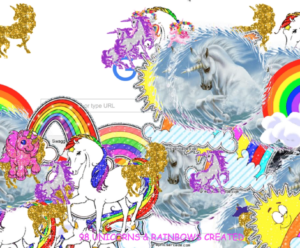The OpenAPI Specification (OAS) version 2.0, formerly known as the Swagger specification, is the current industry standard for API descriptions, supported by thousands of open source projects and all major API technology vendors. And OAS version 3.0, planned for release in July 2017, is the first major update to the specification.
OpenAPI 3.0 can describe a wider range of modern REST APIs with greater precision and detail. It offers improved component reuse, more flexible message schemas, and new API features like hyperlinks and callbacks.
RepreZen is excited to announce experimental editing support for OpenAPI 3.0 in our commercial and open source software, bringing these new capabilities right to the developer desktop. Our first implementation is based on the current draft specification, and uses the Gnostic JSON Schema for OpenAPI, contributed by Tim Burks at Google.
RepreZen Joins the Open API Initiative
We’re also proud to announce that RepreZen is now a member of the Open API Initiative, where we’ll continue to work as part of the Technical Developer Community on the OpenAPI Specification.
Working with the OpenAPI community is a gratifying experience for us, because of the great depth of knowledge and thought leadership from SmartBear, Google, Microsoft and others. They’ve kept their promise of keeping the group open and vendor-neutral. And with Swagger they’ve inherited a wealth of practical knowledge, elaborated in discussion threads on GitHub (and elsewhere), and distilled into the OpenAPI Specification itself.
For the RepreZen team, this puts the official stamp on our participation, which now dates back several years, and our support for OAS as the industry-standard API description language.
And to our customers, joining the OAI is our promise to keep OAS at the center of RepreZen’s products and open source technologies, to keep innovating and building solutions that make OpenAPI work for you.
Thoughts on the OpenAPI, Past and Future
Great software is about meeting in the middle.
 If you’re an idea guy like me, you come at it from the abstract viewpoint, describing the essence of the problem and the solution, with maximum insight, and minimal implementation detail. You look for the highest-level, most expressive way to represent that in a machine-readable form, and you drill down to implementation detail, but only as far as you need to.
If you’re an idea guy like me, you come at it from the abstract viewpoint, describing the essence of the problem and the solution, with maximum insight, and minimal implementation detail. You look for the highest-level, most expressive way to represent that in a machine-readable form, and you drill down to implementation detail, but only as far as you need to.
If you’re a pragmatist, you start with the nuts and bolts, the mechanics, and refactor your way up to a more elegant solution. But only until the elegance stops paying for itself. Then you stop, leave the rough edges for another day, and move on.
But whichever angle you come from, it’s an ongoing process of reconciliation. Evolving the software means evolving the conceptual framework and code in parallel; and constantly, artfully, weaving them together. You work top-down and bottom-up, and you meet in the middle.
The OpenAPI Specification is a beautiful example of what just the right amount of abstraction can do. It offers a step up in expressive power, allowing developers to think in terms of resources, operations and data models — familiar concepts, gliding at a comfortable altitude just above the canopy of protocols, controllers and classes. And you don’t have to rethink your API in high-level semantics, esoteric concepts, or religious dogma.
And with a rich ecosystem of commercial and open source tools, developers have a choice of working bottom-up, using code-first annotations, or top-down, using an API description language. Wherever you start, we can all meet in the middle with the OpenAPI Spec.
Let’s Talk APIs!
Want to get involved? Our door’s open, and we love hearing from our users.
- Talk to us, and let us know what you think about OpenAPI, RepreZen API Studio and KaiZen Editor.
Reprezen API Studio: A Complete IDE for OpenAPI Development 
RepreZen API Studio is our flagship platform for API-first design, documentation and development.
To get started, just register for the free trial, download and install. See the FAQ article on our support site to get started.
KaiZen OpenAPI Editor: Now on Eclipse Marketplace
KaiZen OpenAPI Editor is RepreZen’s open source, Eclipse-based editor for the industry-standard OpenAPI Specification language. This is the same full-featured editor, formerly known as SwagEdit, used by RepreZen API Studio. KaiZen OpenAPI Editor is our core editing component for OpenAPI 2.0 and 3.0.
You can try it out today by installing from Eclipse Marketplace into Eclipse Desktop IDE, Mars.2 release or later. Once you’ve installed, see the Getting Started Guide for quick overview.


 If you’re an idea guy like me, you come at it from the abstract viewpoint, describing the essence of the problem and the solution, with maximum insight, and minimal implementation detail. You look for the highest-level, most expressive way to represent that in a machine-readable form, and you drill down to implementation detail, but only as far as you need to.
If you’re an idea guy like me, you come at it from the abstract viewpoint, describing the essence of the problem and the solution, with maximum insight, and minimal implementation detail. You look for the highest-level, most expressive way to represent that in a machine-readable form, and you drill down to implementation detail, but only as far as you need to.



